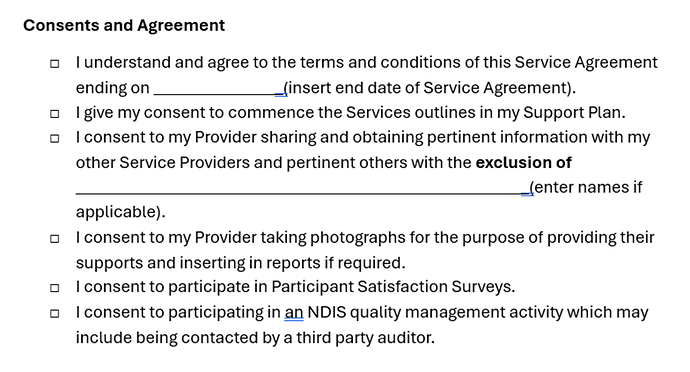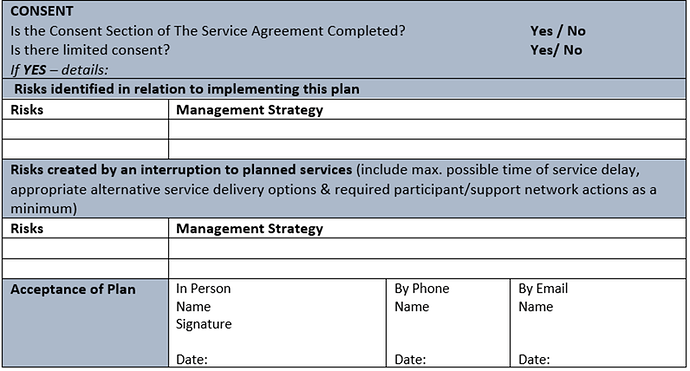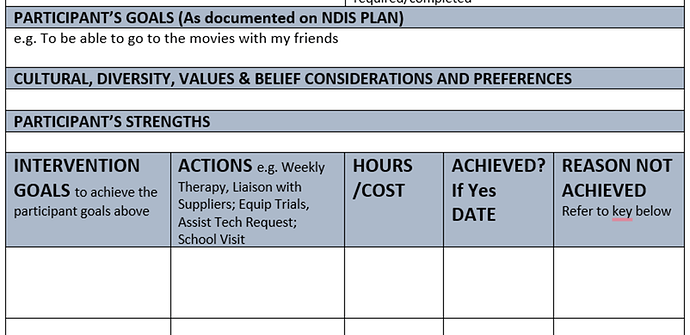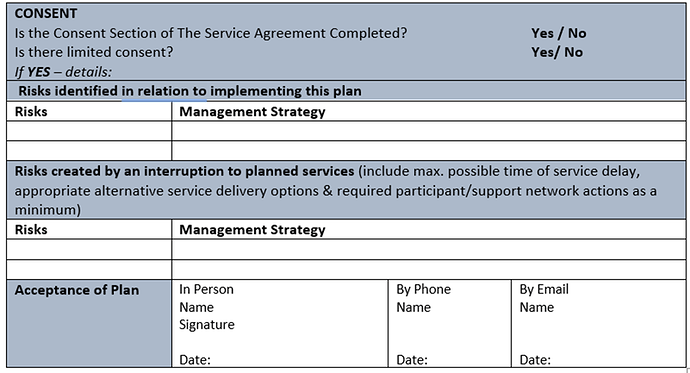If you have been following these articles in order, I promise we are nearly there! This article covers the third section of the NDIS Practice Standards, Provision of Supports [Service Delivery]. This section focuses on implementing participant’s rights and responsibilities and ensuring you are meeting their needs. This is part of what providers do every day, you just need to be able to provide the evidence that shows it in the event of an audit or review. The outcomes covered by this section are found on pages 12-15 of the Practice Standards and include:
- Access to Supports
- Support Planning
- Service Agreements with Participants
- Responsive Support Provision
- Transitions to or from a Provider.
So what are the NDIS and auditors looking for?
They want to be able to see that:
- You have multiple avenues for communicating your services to participants.
- Participants are actually informed about costs, services not provided and why or how services could be withdrawn.
- You make reasonable adjustments to the environment where supports and services are provided to meet participants’ needs.
- You ensure participants are given choice and services are not denied based solely on a dignity of risk obstacles.
The good news about this section is that all the documents have been covered in the previous articles about Rights and Responsibilities and Governance and Operational Management. The documents which support each outcome are listed below.
Access to Supports
- Feedback and Complaint Form
- Participant Handbook
- Participant Intake Form
Support Planning
- Participant Assessment and Support Plan
- Participant Handbook
- Participant Intake Form
- Service Agreement
Service Agreements with Participants
- Easy-to-read documents
- Participant Handbook
- Service Agreement
- Service and Support Schedule
- Staff Handbook
Responsive Support Provision
- Participant Assessment and Support Plan
- Participant Consent Form
- Participant Handbook
- Participant Intake Form
- Service Agreement
- Staff Handbook
- Staff Information Form
Transition To or From a Provider
- Individual Risk Assessment Form
- Participant Assessment and Support Plan
- Participant Exit Form
- Participant Handbook
Let’s take a closer look at some important documents and what you need to include.
Service Agreement
Why do I need this document?
To ensure you and your participants have an agreed set of expectations as to how services will be delivered.
It should demonstrate you inform participants of:
- Cost of services
- Period of service agreement
- Their rights
- Your responsibilities and theirs
- How you maintain participant privacy and confidentiality
- How to make a complaint
- The cancellation policy
- How to end the Service Agreement.
It also enables you to collect consent from participants concerning multiple areas at the commencement of services as in the following example from a Service Agreement:
Sometimes providers may include this information in a Support Plan or you may already have a system that works for you. However, critical reflection is important so consider if this system includes all the relevant information needed to remain compliant and if not, change it!
You can find an example of a service agreement broken down in this article:
https://forum.pnpcommunity.com.au/t/service-agreements-and-you-what-do-you-need-to-know/1477
Participant Support Plan
Why do I need this document?
It is complementary to your Service Agreement to ensure all relevant information for compliance is evident.
It is designed to provide evidence that you are following your Service Delivery Model and policies. It keeps you and the participant focussed on participant goals and how resources will be allocated to meet these goals.
Legislative changes related to Emergency and disaster management in 2021 require providers to demonstrate:
- Risk assessments occur in collaboration with participants
- Risk assessments are documented and readily available as required.
- How risks related to disruption in services will be managed by you.
- How these management strategies have been communicated to participants.
Risk assessment and other reasons to consider having a separate Service Agreement and Support Plan are illustrated below:
This is illustrated in the below examples from a section of a Support Plan:
- They document who has contributed to developing the plan.
- They document participants’ goals and the interventions to achieve these.
- Participants’ cultural needs have been considered.
- There is a focus on participant strengths.
- Clear communication between provider and participant of the intended services to be provided to meet their goals.
-
Risks are identified.
-
The participant and their support network are aware of contingency plans if there is a disruption to services.
-
The plan has been accepted by the participant and/or their decision-maker.
- Documentation of reviews of the plan and reasons for any goals not being achieved.
Hopefully, you found these examples useful!
And even better news, the next article will cover the last section of the Core Module NDIS Practice Standards, Provision of Supports Environment. Covering expectations of the conditions and environments in which supports are provided to participants. Also looking at specific areas of risk when providing supports and services. The specific outcomes which we will look at are:
- Safe Environment
- Participant Money and Property
- Management of Medication
- Mealtime Management
- Management of Waste







